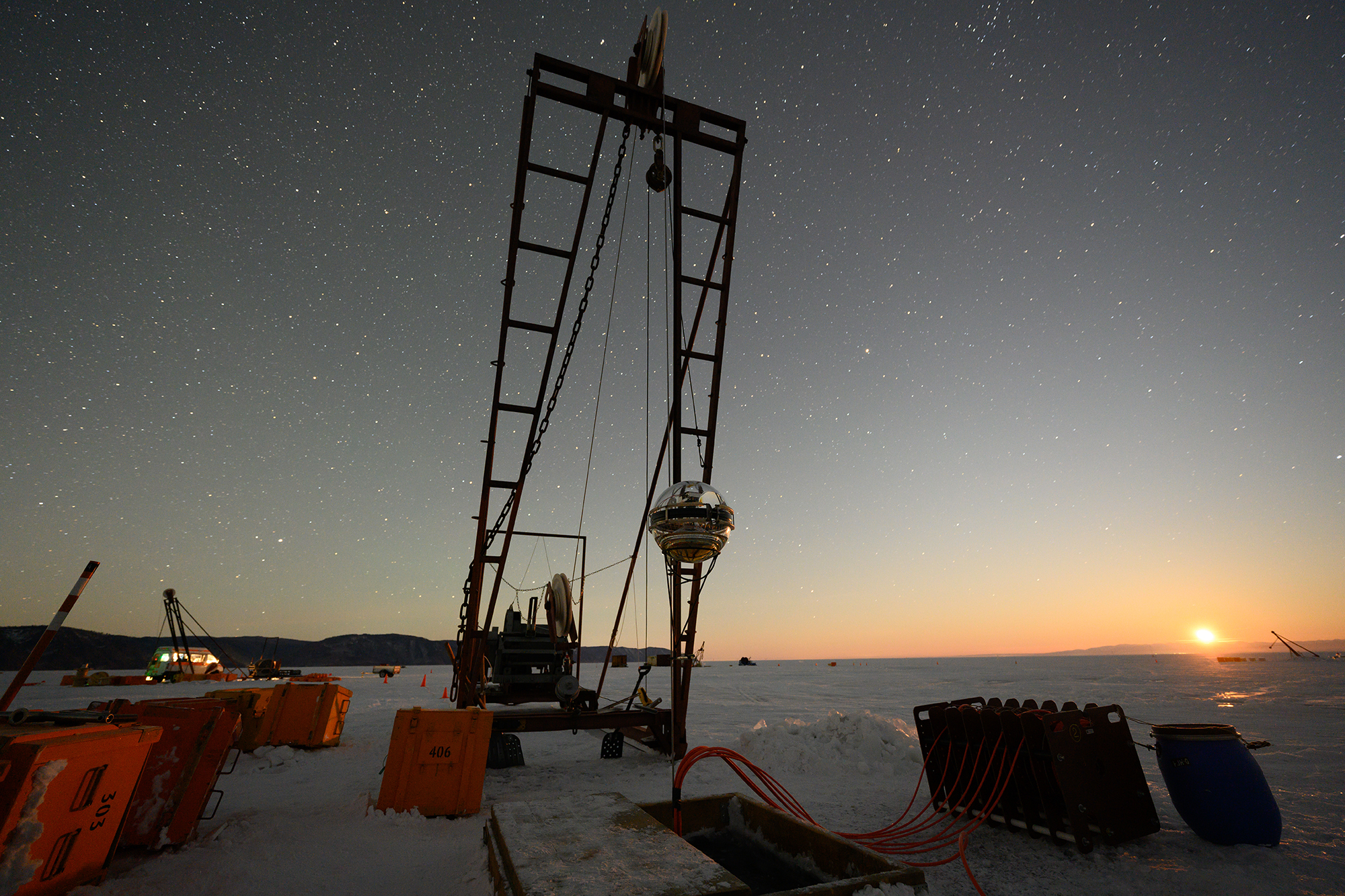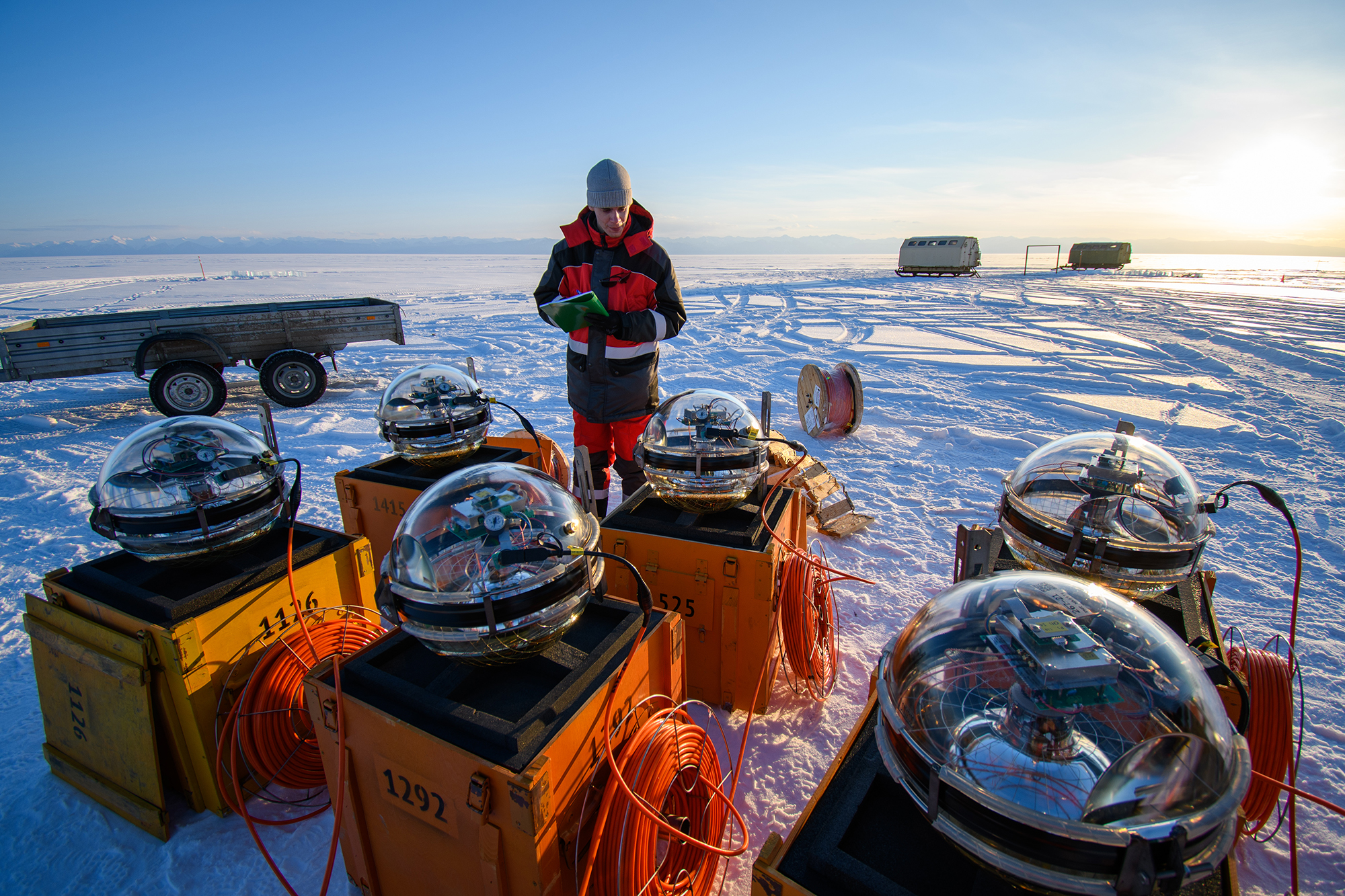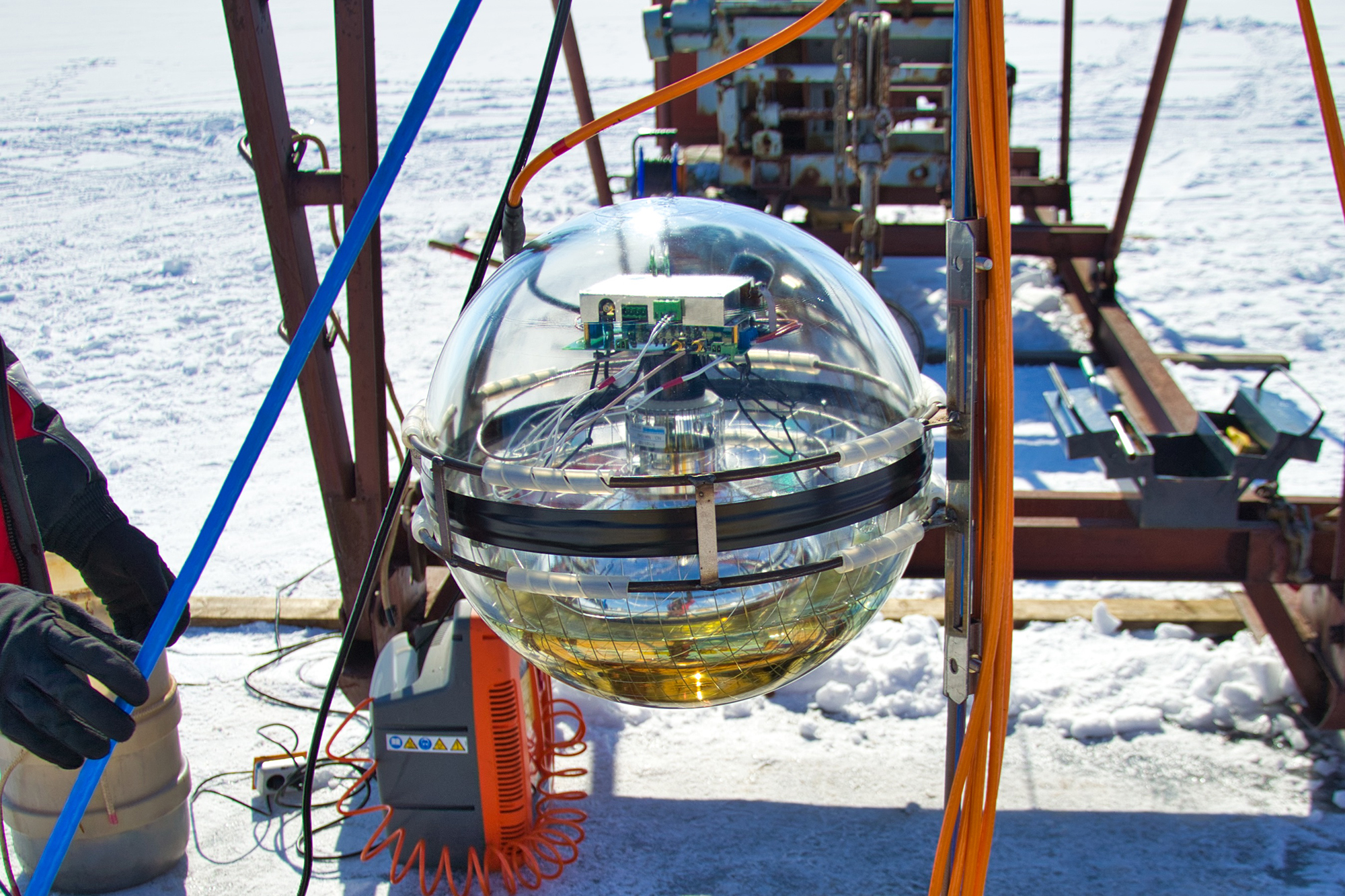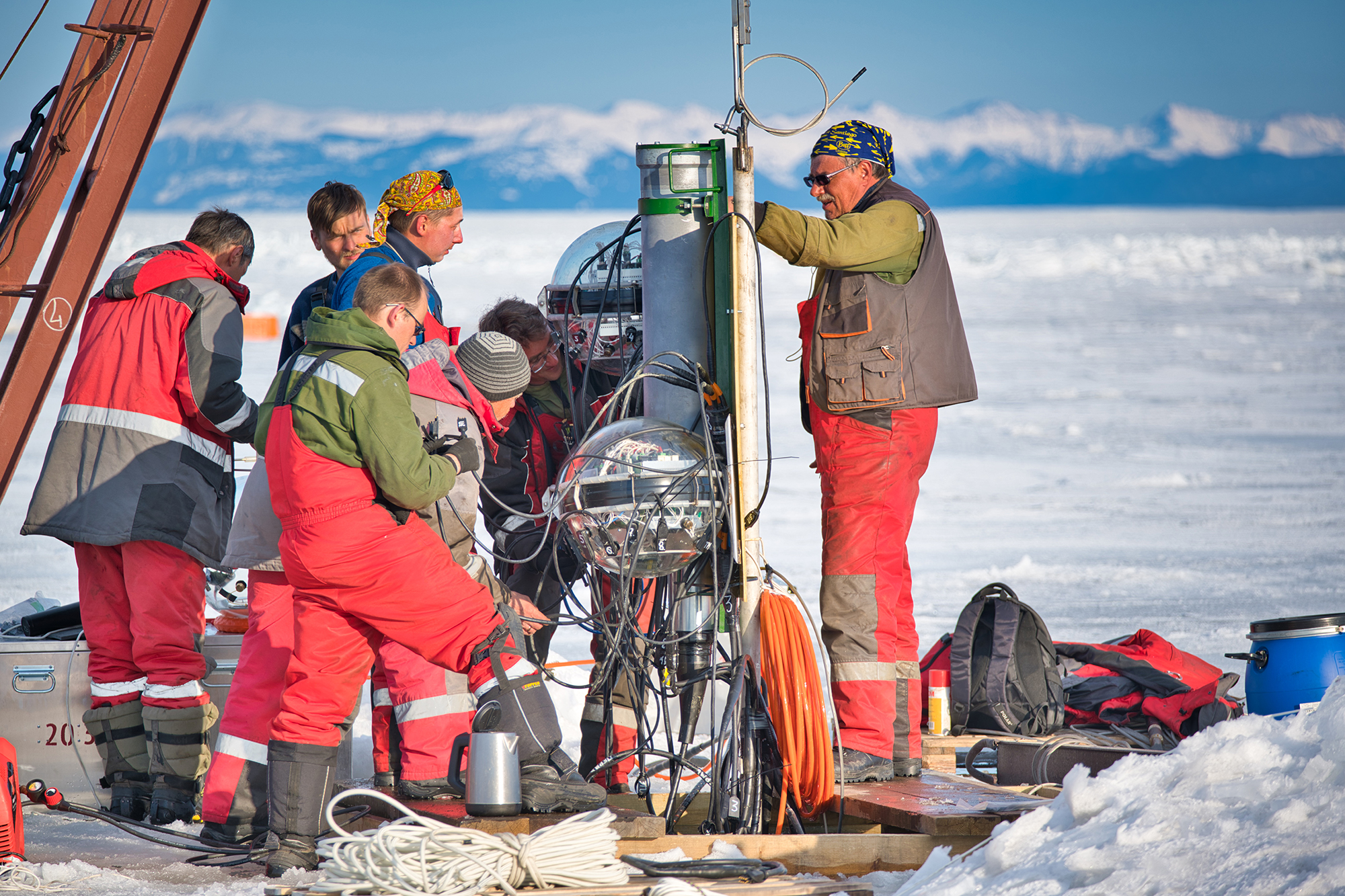Start of a regular expedition on the construction of neutrino telescope on Lake Baikal
News, 16 February 2024
On 16 February 2024, a regular expedition to construct a deep-water neutrino telescope of cubic kilometer scale Baikal-GVD starts on Lake Baikal. For about two months the participants will modernize the already installed clusters, install the 13th one, and assemble two lake-bed cable lines to clusters 13 and 14. The plans also include test of next-generation detector. The participants of the expedition are researchers from JINR, INR RAS, ISU, MSU SINP, SMTU, and LIN of SB RAS.
The Baikal Neutrino Telescope is a neutrino detector located in Lake Baikal 3.6 km offshore at a depth of about 1300 m. This unique scientific facility is a significant tool of multimessenger astronomy, a new powerful method for studying the Universe. To date, 12 clusters have been put into operation. They are spaced 250―300 m away from each other. Each cluster contains 8 vertical strings with optical modules (36 spheres on a string). The optical system detects the Cherenkov radiation of muons and cascades of high-energy charged particles produced by neutrinos interacting with the matter of water medium. At present, the telescope comprises 3500 photodetectors. The project volume of one cubic km is intended to be achieved by 2027/2028.
Neutrino telescope deployment is underway. Every year, from mid-February to mid-April, expeditions take place on Lake Baikal, during which new clusters are installed and previous ones are modernized. Up to 60 people will take part in the expedition. For many years, the work on the ice is supervised by Igor Anatolievich Belolaptikov, Acting Head of the expedition, Head of the Baikal-GVD facility of the Dzhelepov Laboratory of Nuclear Problems at JINR.
“Preparation of material support for the planned activities was carried at a good level, and we hope that the weather and ice condition will allow us to implement all our plans,” Igor Belolaptikov said.
The Baikal-GVD Neutrino Telescope is aimed at detection and study of ultrahigh-energy neutrino fluxes from astrophysical sources. Using it, scientists are going to study not only processes with huge energy release that happened in the distant past but also galaxy evolution, formation of supermassive black holes, and particle acceleration mechanisms.
Baikal-GVD is one of the three operating neutrino telescopes across the world and, along with IceCube at the South Pole and KM3NeT in the Mediterranean Sea, is part of the Global Neutrino Network (GNN). It is being constructed by concerted efforts of the international collaboration with the leading role of the Institute for Nuclear Research of the Russian Academy of Sciences (INR RAS, Moscow), the founder of this experiment and the direction “high-energy neutrino astronomy” in the world, and of the Joint Institute for Nuclear Research (JINR, Dubna).
The 2024 expedition was organized by the Institute for Nuclear Research of RAS (Moscow), the Joint Institute for Nuclear Research (Dubna) and Irkutsk State University.



